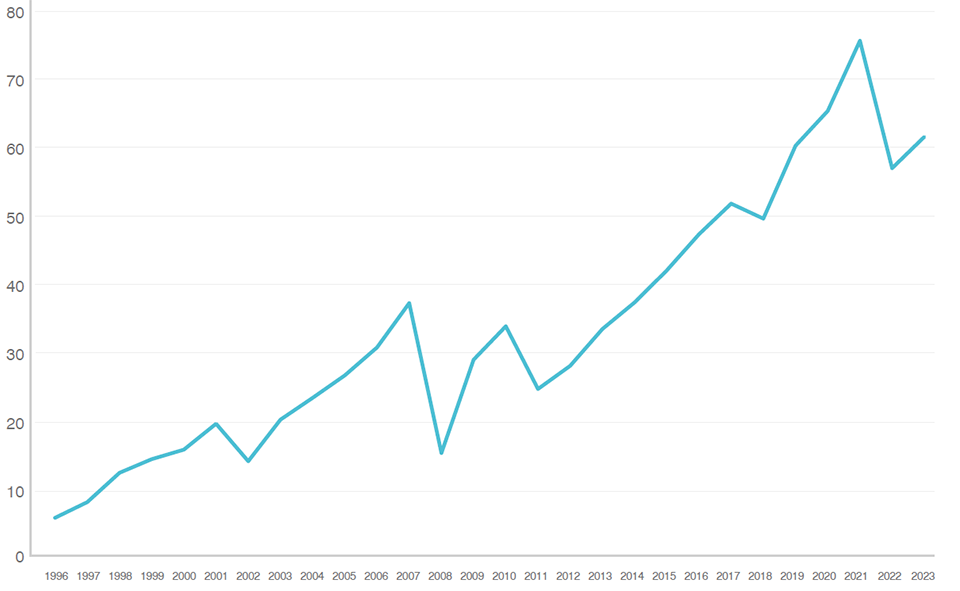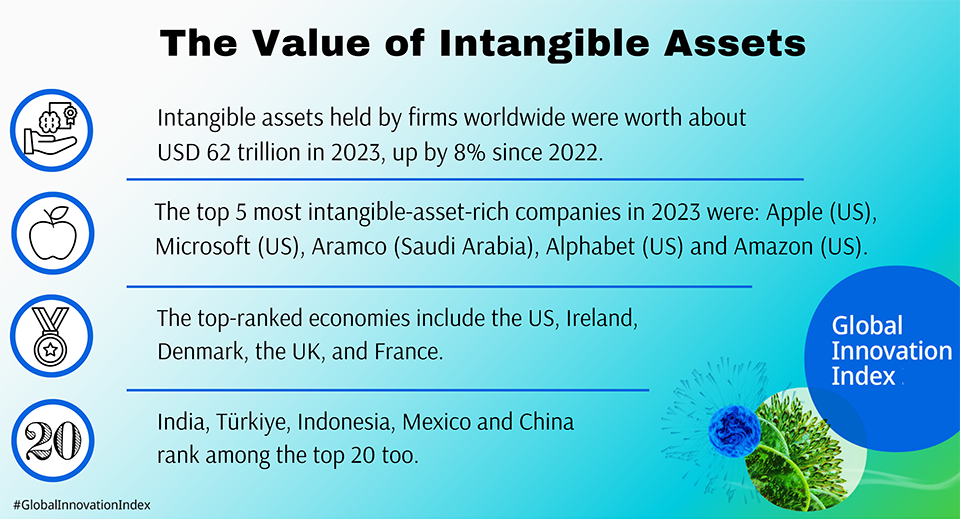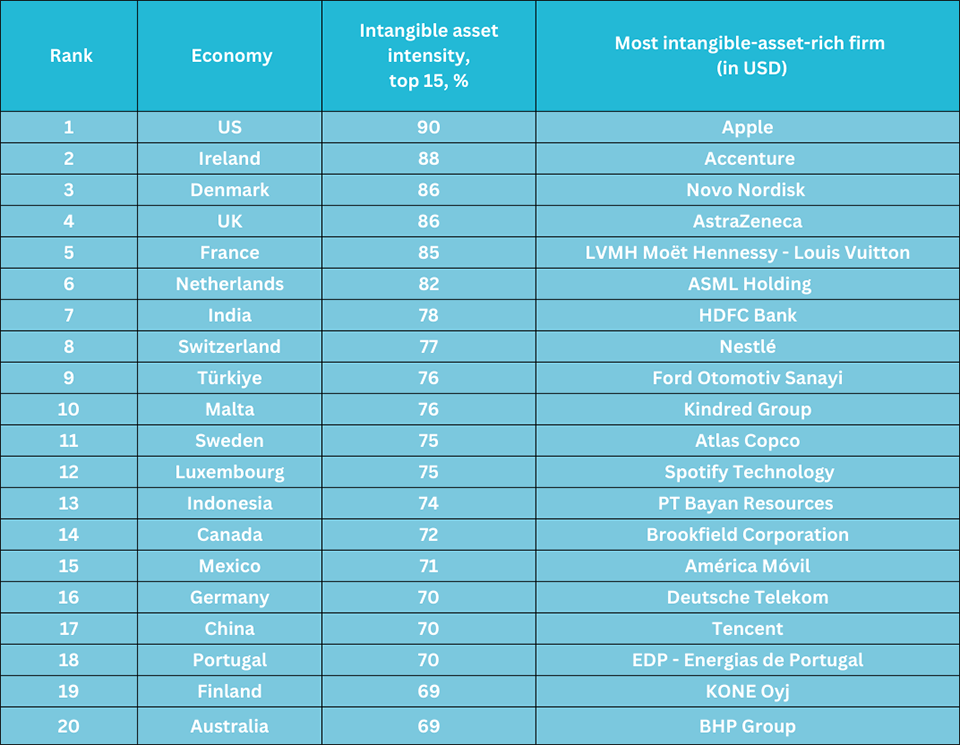Corporate Intangible Assets Grew to USD 61.9 trillion in 2023
February 28, 2024
By Annie Brown and Annabella Garnham (Brand Finance), and Anmol Kaur Grewal, Lorena Rivera Leon, Jeff Slee, and Sacha Wunsch-Vincent (WIPO)
Global corporate intangible value increased by 8% in 2023, after a sharp decline in 2022. The most intangible asset-intensive economies are the US, Ireland, Denmark, the UK, and France. India, Türkiye, Indonesia, Mexico and China rank among the top 20.
Figure 1: Global Corporate Intangible Value (USD trillion)

Concurrent with the digital revolution, intangible assets – such as R&D, intellectual property, brands, software, databases, organizational assets and skills - have grown in importance. They are now the cornerstone of any vibrant innovation ecosystem.
In collaboration with Brand Finance, we identify the top global 5,000 firms in terms of their ownership of intangible assets for each country in the Global Innovation Index. We then construct an intangible asset intensity indicator – that measures how much intangible assets make up of total enterprise value of the top 15 firms per country.

We find that:
- Global intangible assets held by firms worldwide are worth USD 61.9 trillion in 2023, growing by 8 percent since 2022, and up by a factor of 10 from USD 6 trillion in 1996.
- That said, the 2022 slump was deep; the value of corporate global intangible assets in 2023 still falls short of its peak in 2021 by about 19 percent, partly a reflection of overall stock market valuations.
- In terms of the most intangible asset-intensive firms, the top-ranked economies tend to be high-income economies including: the United States of America (US), followed by Ireland, Denmark, the United Kingdom (UK), and France.
- In the US, for example, the ratio of intangible asset to enterprise value for the top 15 firms is 90% i.e., close to the full enterprise value.
- Select middle-income economies also shine with respect to intangible asset intensity:
- For instance, India (7th), Türkiye (9th), Indonesia (13th) and China (17th) in Asia; and Mexico (15th) in Latin America rank among the top 20 economies.
- Among the top 20 economies, intensities range from 90% in the top-performing US, to 82% in the Netherlands (6th), to 78% in India (7th), 76% in Türkiye (9th), and 70% in economies like Germany (16th) and China (17th).
- You can check individual GII country profileswith their top 15 companies here, and full country briefs, for example, for USA, Germany, Brazil, China, or India.
Table 1: Economies with highest IA-intensity, and their most intangible-asset-rich firm

The most intangible asset-rich firms per country (in absolute US dollars) are from a diverse set of sectors – see the last column in Table 1.
- The consumer electronic company Apple ranks at the top of the most intangible-rich firms globally, followed by Accenture, Novo Nordisk, AstraZeneca and LVMH Moët Hennessy - Louis Vuitton
- Generally, the ICT sector is intangible-asset rich with Tencent in China, Tata Consultancy in India, America Movil in Mexico and the e-commerce platform Shopify in Canada.
- Banks, mining and automotive industries make a strong showing in Indonesia, and Türkiye, while semiconductor firm ASML is top in the Netherlands.
- Finally, the pharmaceutical sector is also intangible-asset-rich, with Novo Nordisk leading in Denmark and AstraZeneca leading in the UK, following the release of new weight-loss drugs.
Background
The Global Innovation Index includes data quantifying corporate intangible asset-intensities, as per its indicator 7.1.1. which is obtained thanks to the collaboration with Brand Finance. See the novel GIFT (2023) data from Brand Finance. Our plan is to expand this partnership to bring meaningful insights into intangible assets’ significance and impacts. This comes in support of a broader effort at the World Intellectual Property Organization (WIPO) to better understand and value intangible assets – see, for example, the recent IP Finance Dialogue on Expanding Horizons on IP Finance and Valuation, as well as WIPO’s new initiative with the Luiss Business School to generate new and timely estimates of investment in intangible assets.